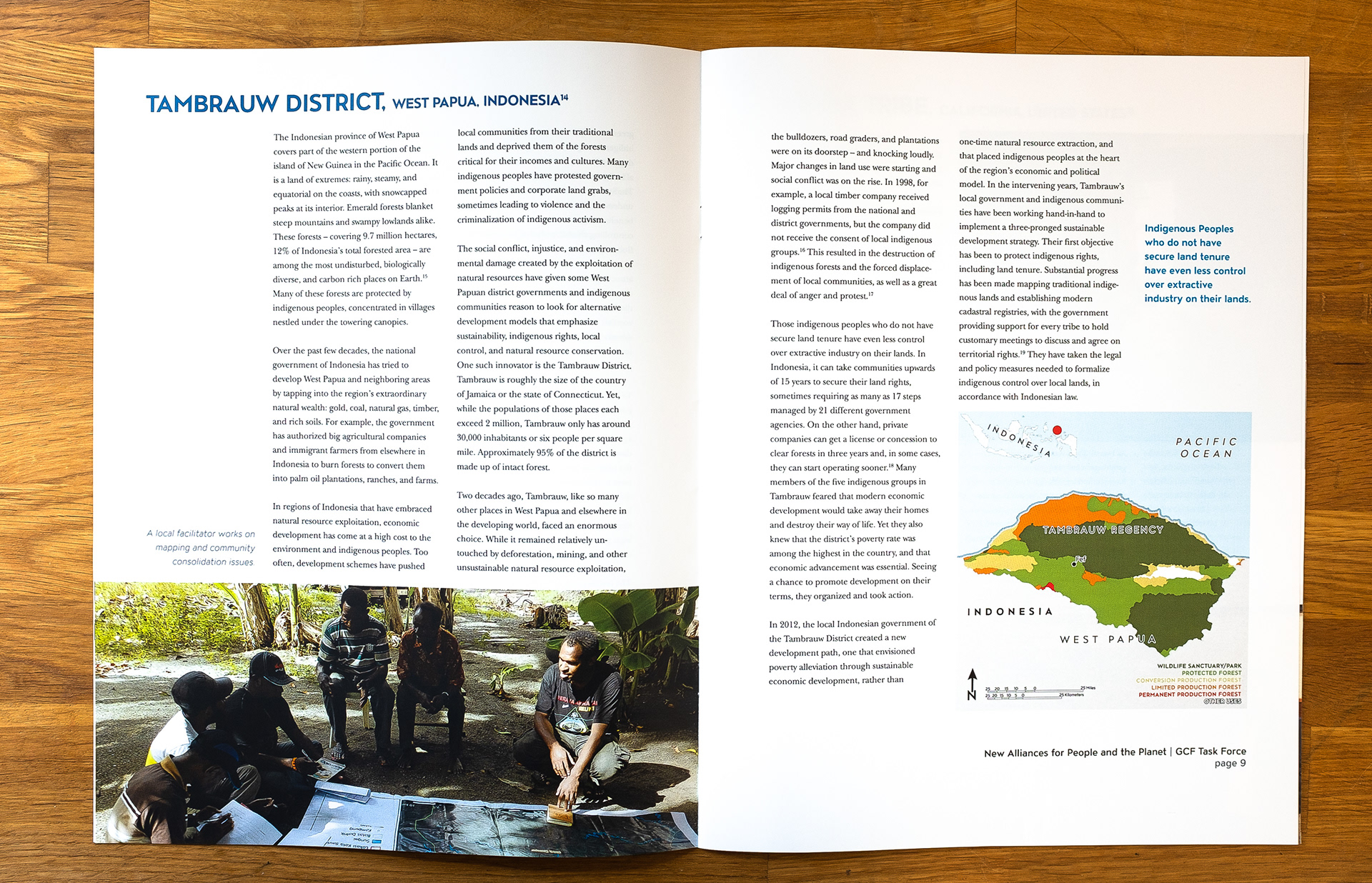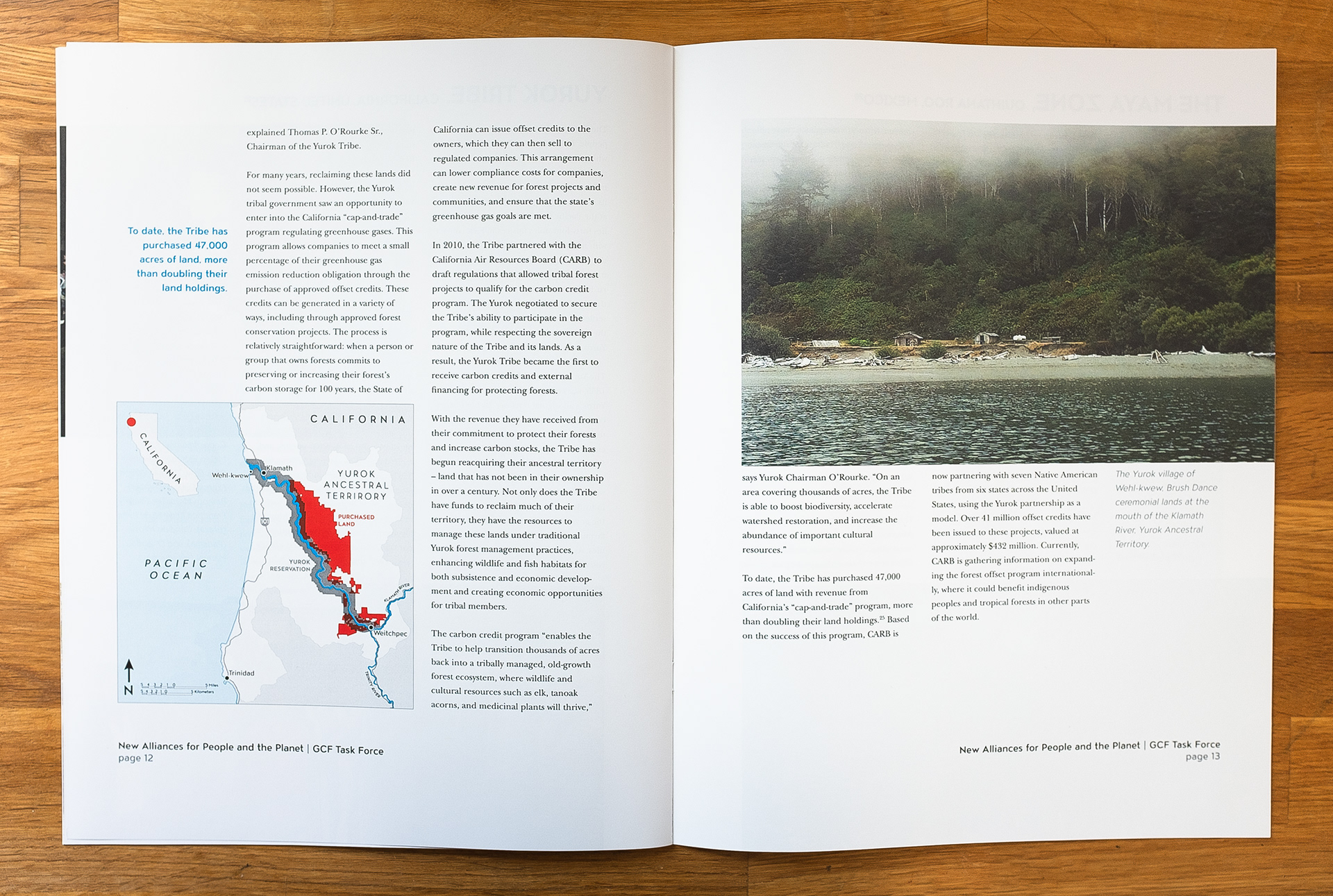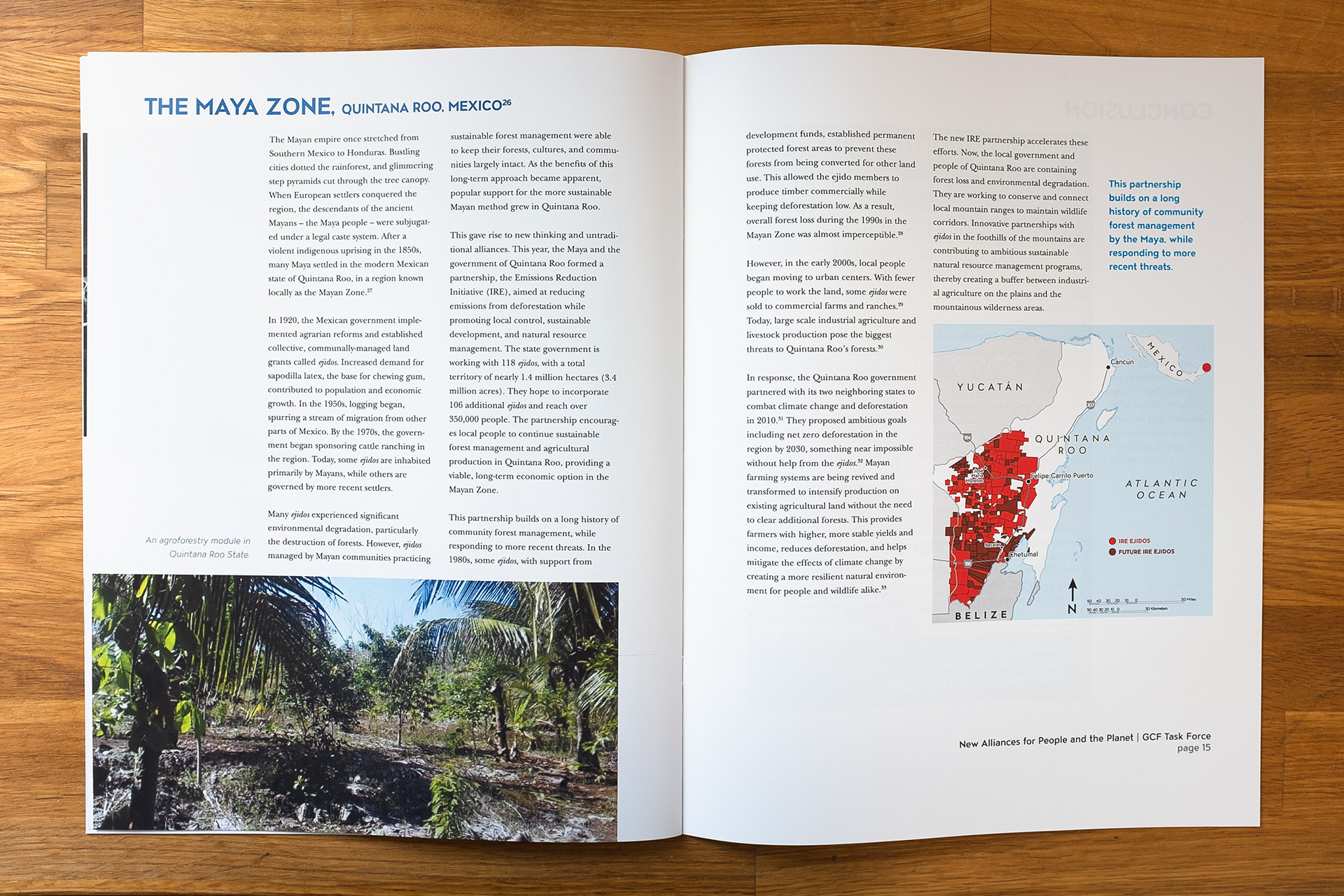



Interior page spread of the Yurok Tribe case study. Pull quotes on each spread draw the reader into the content. Maps and imagery bring the reader to the ancestral territory of the indigenous people that are at the center of each narrative.
We created custom maps for each case study, based on GIS and other client-provided data. The goal with these maps is to bring a sense of place and scale to each story, as quickly as possible. This map of a section of the Yucatán Peninsula shows agricultural divisions that have committed to sustainable farming and ranching practices, as well as divisions that have enlisted in future such commitments.
Each story included original imagery from the case study areas in Indonesia, California, Brazil, and Mexico.
